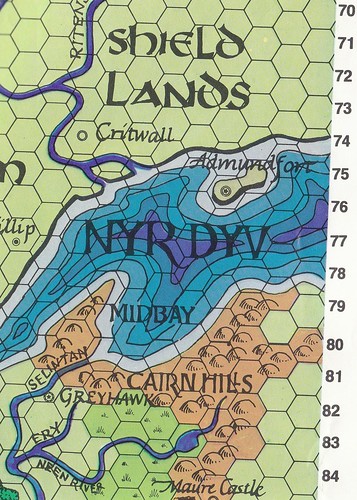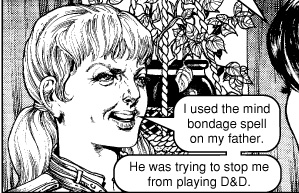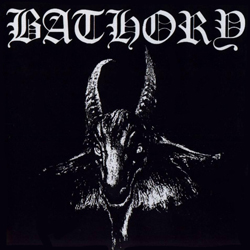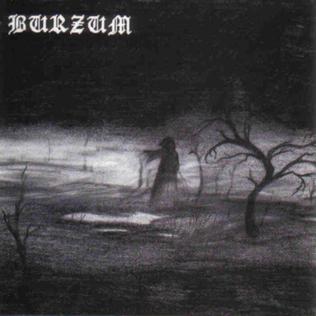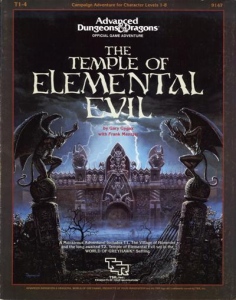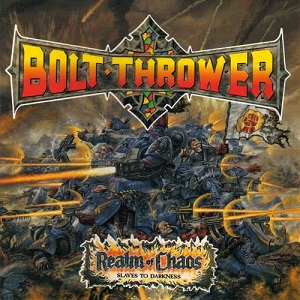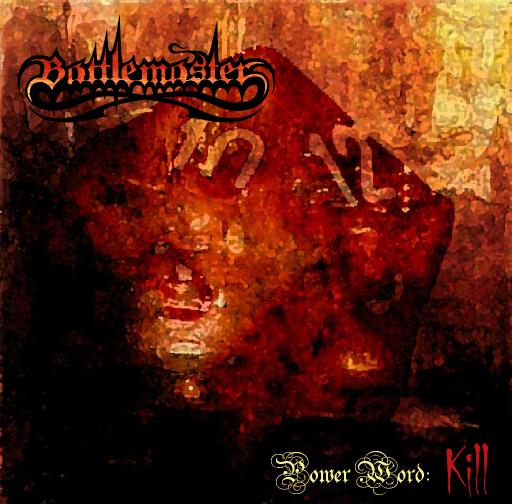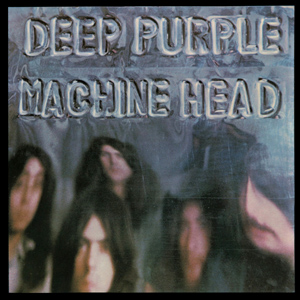
So, in a very roundabout way I've finally had to address the question of bards in my campaign. To wit: Dealing with last week's Advanced Prostitutes & Procurers game led me to look at the Thieves' Guild structure in the City of Greyhawk, which prompted me to take into consideration the "other" illicit guilds described in The Canting Crew: The Assassins' Guild, the Beggars' Guild, and the Vagabonds' Guild. This last encompasses Jongleurs, Gypsies, Strolling Players, Mountebanks and Tinkers (with a great deal of overlap between them). In other words, itinerant entertainers - which inevitably leads us to bards.
Now, I've always had a soft spot for the class. As a player (probably because I get to actually "play" so infrequently), I love "in-between" classes and jack-of-all-trades characters. As a GM, having a bard of any stripe in the party inevitably leads to hilarious situations and juicy complications (not to mention a great information pipeline when I want it). That said, it's had a bit of an identity crisis through the years (and editions).
The original (OD&D) version appears as early as Strategic Review #6, and already we're told that it's basically an amalgamation of the Nordic skald, the Celtic bard, and the medieval minstrel. The class has lore abilities (specifically used here to ID magic items in the dungeon), a basic bent (if not a requirement) towards Neutrality (the bard in all TSR editions seems to have a Heart Full of Neutrality), access to tons of languages (1 per point of Intelligence), and the odd mish-mash of fighter, thief, and (upon attaining 2nd level) spellcasting ability (here from the MU list). Interestingly, elves, dwarves and hobbits may all pursue the class, albeit with limits to their advancement. The 0e bard has a d6 for hit dice and attacks as a fighter of equivalent level. Thieving ability is as per a thief of half their level, rounded down (thus presumably not accessible at 1st level), with the backstab specifically excluded. Here the bard may use any weapon, but is limited to chainmail or leather armor (chain, however, precludes his ability to climb walls and move silently). The article is silent on whether they're allowed to use a shield (I'd guess no). The 0e bard has a % chance per level to mesmerize opponents (once per day per level), and once this is done he may plant a
suggestion as per the spell; he may also use his music to counter song-based effects (the harpy's song is mentioned). Perhaps most unusual is that the bard here attracts followers starting at 2nd level, and these followers increase in number and level as the bard advances in experience. The Gaelic college names (Fochlucan, Mac-Fuirmidh, etc.) are present already. (Note: I had assumed these to be "mock Gaelic" and pseudo-historical; not so, as it turns out - check
this link for a metric ton of bardy goodness.)
AD&D and the Players Handbook brought us the 1e bard, AKA "the original prestige class" - prestigious indeed, due to the requirements in getting one through actual play! The class seems to be a retro-fit of the 0e version, adding in a highly unusual (and somewhat problematic to arbitrate) "training period" before you actually get to the bardyness. (That's a word, right? Bardyness? Should be, anyway.) What's more, the progression here (gaining at least five but less than eight levels of fighter, then gaining at least five but less than nine levels of thief before finally switching to bard) works completely different from the standard dual-class (or multi-class) systems (which has caused much wailing and gnashing of teeth over at the Dragonsfoot forums, I can assure you). The class as presented here has a reputation for a huge power bump once the bard levels are attained (as the xp progression given here is somewhere between the fighter and the cleric, yet for some reason the bard BTB gets a new HD every bard level, again flying in the face of the traditional dual-class system where you don't get new HD until your new class exceeds the old), as well as the near-mythical rarity of actual, played-from-first-level 1e bard PCs.
All that craziness aside, the actual class is pretty close to how it's presented for 0e. Races are limited to elven and half-elven. (This is parodied somewhat in the novel
Azure Bonds, with the halfling "bard" Olive.) (Note how retardedly powerful the
actual bard in this story is, too - he becomes a friggin' god by the end of the series! Clearly either Novak or Grubb had seen one in play at the table. LOL) Alignment is now required to be Neutral in at least one of its axises (this would also stay put until d20 rears its ugly and oh-so-permissive head). Hit dice are still a d6, but the 1e bard attacks as per his fighter level,
which never increases once the class is abandoned (more on that later), while thieving ability is as per thief level. Weapons are now restricted (the druid list plus non-two-handed swords), and now only magical chain is permissible (presumably once you've worked through ten levels of fighter and thief, this is not too problematic). Spells are now from the druid list, and go up to 5th level; what's more, the 1e bard gains all druid abilities as a druid equal to their bard level. Additional languages are granted as the bard advances in level. The Legend Lore, Charm and Counter-song abilities of the older class are present, largely unchanged (albeit at a slower rate of advancement), and are supplemented by the now-ubiquitous ability to inspire his allies in battle (+1 to attack, +10% to morale, requires 2 rounds of singing and lasts a turn).
It took AD&D players all of three years to decide that the weird advancement was a little unwieldy, and the concept perhaps a bit muddled, and to do something about it. Dragon #56 (December '81) saw the publication of "Singing a new tune - A different bard, not quite so hard" by Jeffery Goelz. Goelz takes the bard as presented in both previous incarnations, and melds it into a single-class warrior-druid-illusionist (without the thieving associations or the attendant skills). This is informally known as the "Welsh bard," taken more or less from the Welsh Mabingion cycle. The Welsh bard may be human, elven or half-elven (with unlimited advancement); halflings and dwarves may only attain up to 5th level. Alignment is sort of weird - no evil, tending towards law and/or neutrality. Armor is leather only, but may be supplemented with a wooden shield (i.e., as per the druid), although the shield will interfere with Charming. Weapons are as per the druid with the addition of non-bastard-or-two-handed swords, handaxe, hammer, and horseman's mace, and excluding the spear. (Which seems pretty rough giving the poor armor situation and the back-rank position this implies - I'd be inclined to add it back in.) The Dragon bard attacks as a fighter, but does not gain multiple attacks per level or versus "insignificant opponents". They receive but one starting weapon proficiency, and attack with a -4 penalty to non-proficient weapons. They are also prohibited from using an off-hand weapon (such as a dagger or handaxe). (Again, seems a weird restriction.) Here the bard gains druid spells upon attaining 2nd level, and illusionist spells on reaching 4th. However, there is a list of spells from both traditions which are unusable by (these) bards. This bard does not gain extra languages per se, but rather adds a Read Languages ability to their Charm and Lore abilities; the Charm ability here is unrestricted by uses per day. The Inspire ability is as presented in the PHB, with the addition of a +2 bonus to saves vs. fear, and only requires one round of singing (or poetic oratory). The Counter-song ability, in addition to providing complete protection vs. harpies and the like, grants a +1 to saves vs. non-song sonic effects (such as that of a groaning spirit). Interestingly, the bard may also sooth road-weary travellers (I should note that this has never proven the case in my campaigns ;) ), granting a bonus to mounted or pedestrian movement overland. Lastly, the druid abilities are scaled back to just the shape-shift ability, and this at 11th (rather than 7th) level.
(Read in Flavor Flav voice:) Oooohhhh NINETEEN EIGHTY-NINE!!! 2e drops (yo), and the bard gets a single-class overhaul. This is the bard I grew up with, and the genesis of the modern concept of the class. We're firmly in minstrel/jongleur territory, here - the Celtic origin of the class is touched upon, but the actual class described is basically a fighter/thief/MU (errr, "mage") with good people skills. Races allowed are back to human/half-elf, alignments are back to neutral/something. Armor up to chain is allowed (with attendant adjustments to thieving skills), but no shield; weapons are unrestricted. Spells are now from the MU ("wizard") list again, and there is mention of the need for a spellbook. Hit dice are on a d6, with fighting ability as per a thief. Thieving abilities are restricted to Climb Walls, Detect Noise, Pick Pockets, and Read Languages; the 2e bard is better at Detect and Read than a thief, but suckier at Climb and Pick. The Charm ability of previous incarnations has been reduced to a chance to shift listener's reaction category by one place (with an equal and opposite reaction if the target makes a saving throw). The Inspire ability is present, here it can provide (either) a +1 to attacks, a +1 to (all!) saves, or a +2 to morale; it now requires
three rounds of singing to work, and lasts 1 round per level of the bard. Countersong is limited to song-based effects, and requires the bard to make a save to get the effect. The Legend Lore ability is present (5% chance per level), albeit somewhat gimped and ambiguous (does not reveal pluses or powers, only alignment, cursed-osity, and history). Finally, 2e bards can attempt to use scrolls as a thief (just a little bit better).
Lastly, we have the bard as presented in WotC's 3rd Edition. Without going into it too much, the d20 bard is essentially akin to his 2e presentation, with much more emphasis on the "skill monkey" aspect of the class (since now there are skills), spells as per a 3e Sorceror (just a few spells known from the Wizard list, but you can cast'em a zillion times, no book), some weapon restrictions (basically simple weapons with "fencer-type" weapons added on top), limited to light armor (leather up to chain shirt) and (non-tower) shields (albeit with a chance of spell failure when casting in armor). The Lore ability is now Bardic Knowledge, works pretty much the same. Inspire, Counter-song and Charm (now Fascinate) are present, but the reason I include this class is the division of the Inspire ability into Inspire Courage (pluses to combat like we're used to), and "Inspire Competence", which allows you to sing a song and make somebody better at any random task, and is fucking hilarious. The character of
Elan (from
Order of the Stick) is pretty much based around this, and the
"Bluff, Bluff, Bluff, Bluff the Stupid Ogre!" song is one of my top ten webcomic comedy moments; hence this class's inclusion.
So that's the rich tradition of the bard, as seen through the lens of a game about genocidal murder and doing B&Es. Next time we get to look at how I'm bringing some of these classes in line with each other for (simultaneous, parallel) inclusion in my AD&D game. There will be fucktons of charts.
- DYA










